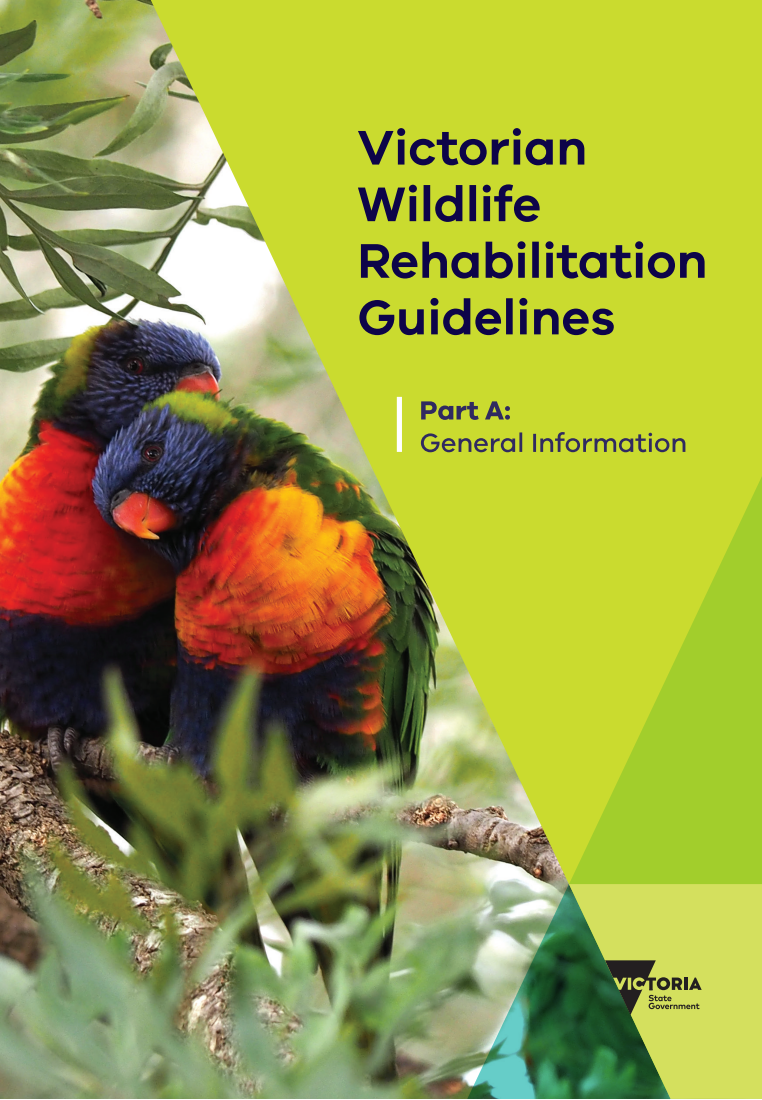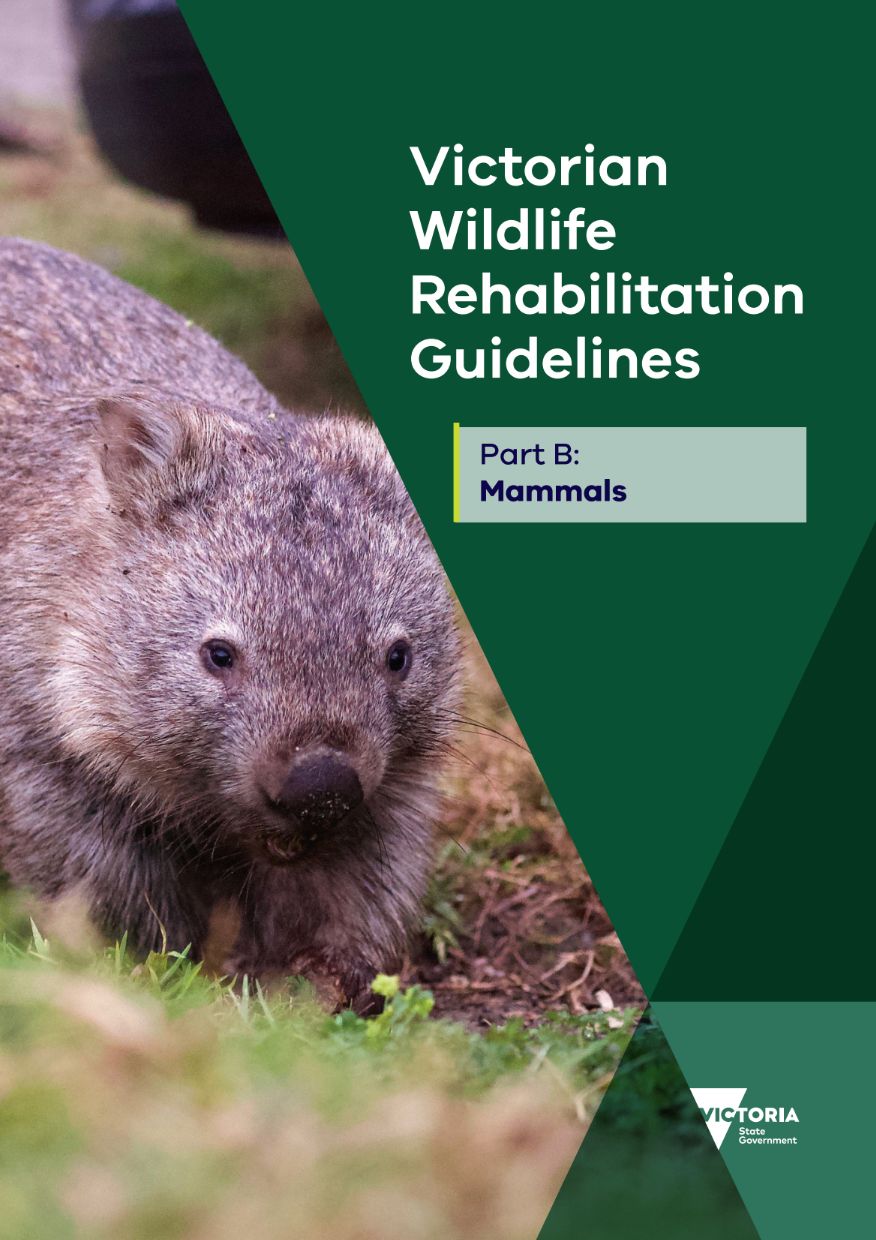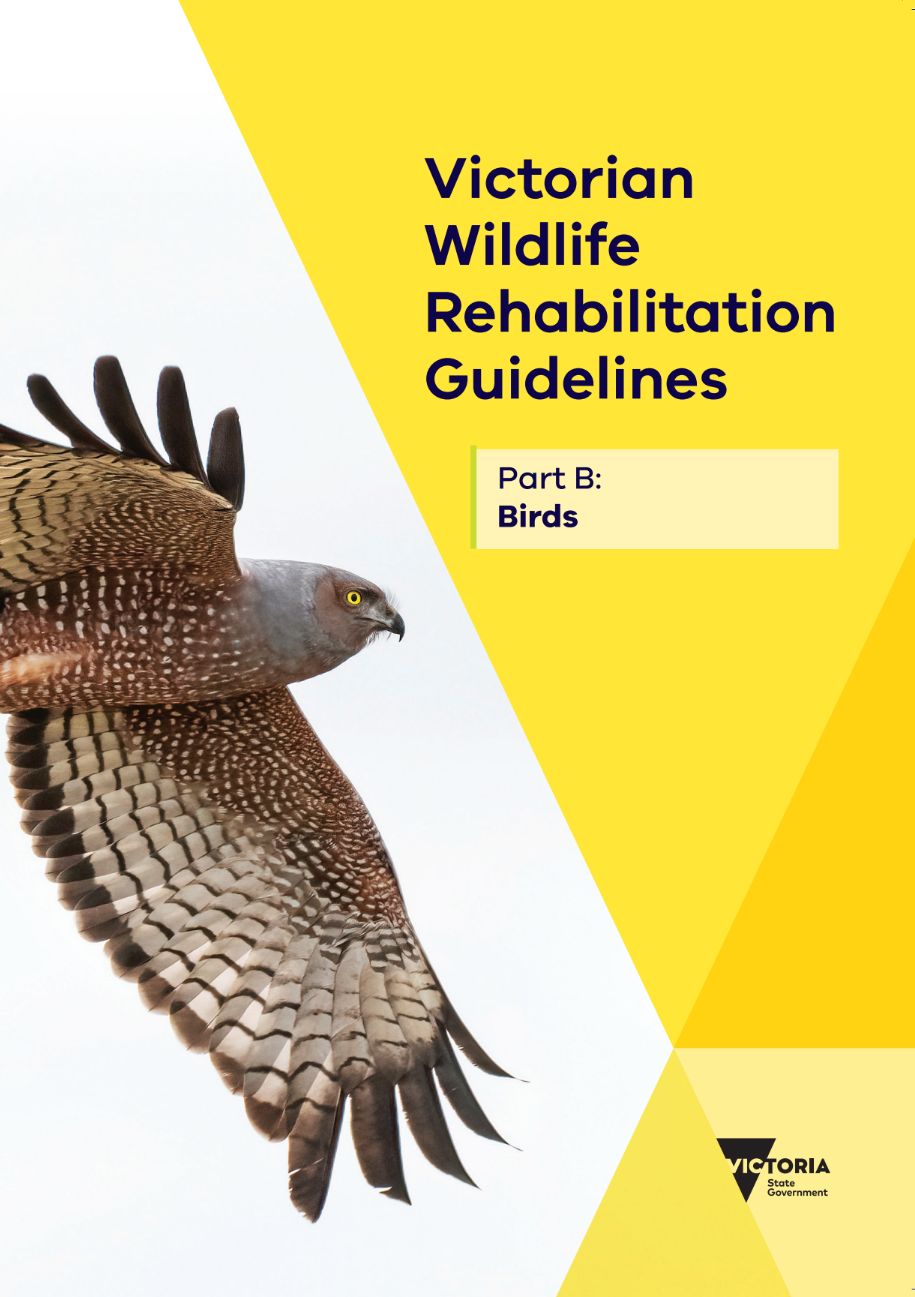In Victoria, wildlife rehabilitation is defined as the process of providing appropriate care, including access to veterinary assessment and treatment and nursing support where required, to sick, injured and orphaned native animals, with the goal of restoring them to their natural condition and releasing them back to the wild.
Wildlife rehabilitation is undertaken by a diverse network of volunteer shelter operators and foster carers (collectively referred to as wildlife rehabilitators). They are supported by wildlife rescuers and registered veterinarians working in private practice or employed by zoos, sanctuaries and non-government wildlife and conservation organisations across Victoria. Effective wildlife rehabilitation requires considerable knowledge, skill and a willingness to learn. The Victorian Wildlife Rehabilitation Guidelines (the guidelines) have been created to:
- support wildlife carers to understand current best practice in wildlife rehabilitation
- assist with the administration of basic first aid
- provide health care following veterinary instruction
- provide information on species appropriate housing and nutrition
- ensure environmental enrichment needs are met to result in the best welfare outcomes for the animals in care.
The Victorian Wildlife Rehabilitator Guidelines (the guidelines) have been prepared and reviewed by the Department of Energy, Environment and Climate Action (DEECA), Zoos Victoria, members of the wildlife rehabilitator community and experienced wildlife veterinarians around Australia. The guidelines are designed to support wildlife rehabilitators to adhere to the conditions set out in the Wildlife Rehabilitator Authorisation Guide: Things you need to know. (Refer to Wildlife shelters and foster carers website for any updates).
Part A: General Information
Chapter 1. Introduction | Page 4 |
Chapter 2. Welfare-based decision-making | Page 12 |
Chapter 3. Euthanasia of wildlife | Page 24 |
Chapter 4. Biosecurity and hygiene | Page 38 |
Appendix
Hand-raising Record-keeping Template | Page 52 |
Record Keeping Template for Visual and Physical Observations, Feeding and Medication | Page 54 |
Victorian Wildlife Rehabilitation Guidelines Part A: General Information (PDF, 7.6 MB)
Part B: Mammals
Page 2 | |
Page 46 | |
Page 86 | |
Page 118 | |
Page 156 | |
Page 192 | |
Page 244 | |
Page 292 | |
Page 340 | |
Page 414 |
Victorian Wildlife Rehabilitation Guidelines Part B: Mammals (PDF, 16.0 MB)
Part B: Reptiles and Amphibians
Page 2 | |
Page 38 | |
Page 76 | |
Page 110 |
Victorian Wildlife Rehabilitation Guidelines Part B: Reptiles and Amphibians (PDF, 11.8 MB)
Accessible word files
Part A: General Information accessible (DOCX, 436.7 KB)
Part B: Mammals
Chapter 1. Bandicoots accessible (DOCX, 7.9 MB)
Chapter 2. Dasyurids accessible (DOCX, 6.5 MB)
Chapter 3. Echidnas accessible (DOCX, 5.3 MB)
Chapter 4. Flying Foxes accessible (DOCX, 8.0 MB)
Chapter 5. Koalas accessible (DOCX, 6.7 MB)
Chapter 6. Macropods accessible (DOCX, 11.7 MB)
Chapter 7. Microbats accessible (DOCX, 10.4 MB)
Chapter 8. Native rodents accessible (DOCX, 8.3 MB)
Chapter 10. Wombats accessible (DOCX, 9.9 MB)
Part B: Birds
Chapter 1. General birds accessible (DOCX, 23.1 MB)
Chapter 2. Raptors accessible (DOCX, 28.1 MB)
Chapter 3. Waterbirds and marine birds accessible (DOCX, 23.3 MB)
Part B: Reptiles and Amphibians
Chapter 1. Lizards accessible (DOCX, 8.2 MB)
Chapter 2. Snakes accessible (DOCX, 12.3 MB)
You must comply with the conditions of your authorisation. These guidelines must be read in conjunction with the conditions of your authorisation. Wildlife shelters and foster carers website
Page last updated: 04/01/24



